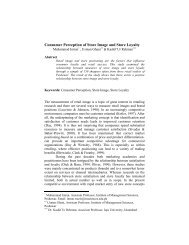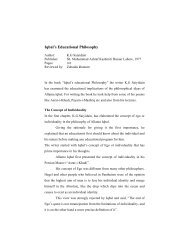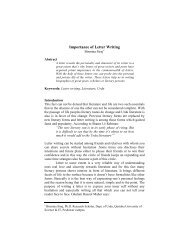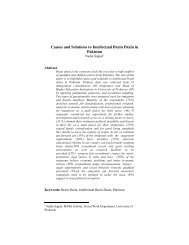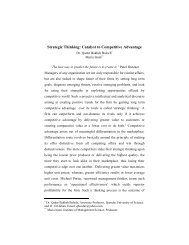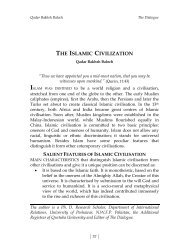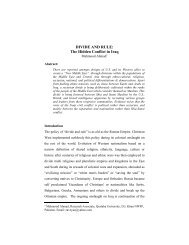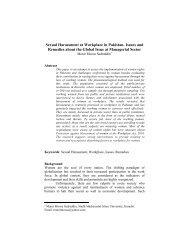COLD WAR POLITICS OF SUPERPOWERS IN SOUTH ASIA Abstract
COLD WAR POLITICS OF SUPERPOWERS IN SOUTH ASIA Abstract
COLD WAR POLITICS OF SUPERPOWERS IN SOUTH ASIA Abstract
Create successful ePaper yourself
Turn your PDF publications into a flip-book with our unique Google optimized e-Paper software.
the freedom of the seas and the protection of European interests in the<br />
strategic parts of the world, i.e. the freedom to keep the high seas open for<br />
navigation, not only for itself but also for allies. As early as 1948, Harry<br />
Hodson had described the Gulf region as a borderland where great interests<br />
meet and clash. The area stretched in a rough, dangerous arc from Kashmir to<br />
the Northwest Frontier province of Pakistan, Afghanistan, Iran, and Egypt.<br />
This curve embraced the Gulf region “as closely and as neatly as the Turkish<br />
crescent embraces the star.” For Hodson, this was the Arc of Danger. 49 C. L.<br />
Sulzberger have written in the New York Times that South Asia has immense<br />
strategic and geographical value and Pakistan is a “geographical absurdity”<br />
because it can block potential Soviet expansion southward through<br />
Afghanistan. 50 Another strategic reason for American interest in the region<br />
and Pakistan was the proximity of northern West Pakistan and “Azad<br />
Kashmir” to the Soviet Central Asia and of former East Pakistan to Tibet and<br />
the Sino-Burmese frontier. Thus, it was easy for American airplanes based in<br />
Peshawar and the Gilgit region could carry out crippling attacks on the<br />
industrial power concentrated in Soviet Central Asia. Moreover, United States<br />
regarded the area of South Asia as vital for its global interest and in any<br />
circumstances the US had the capability to go anywhere and meet any<br />
potential challenge to friend or ally.<br />
In the 1950s the United States perceived that communism is the major threat<br />
to itself and was therefore eager to see other nations (India and Pakistan) must<br />
join the US in organizing the defense of the free world against communism. In<br />
this regard, Pakistan was willing to go along with the American policy of<br />
military alliances in Asia for the purpose of containing communism but<br />
equally desired to obtain American support in its dispute with India. 51<br />
However, no particular development took place between the US-Pakistan<br />
relations until the inauguration of the Republican administration in 1953 and<br />
John Foster Dulles (Secretary of State) was impressed by the “northern tier”<br />
81




